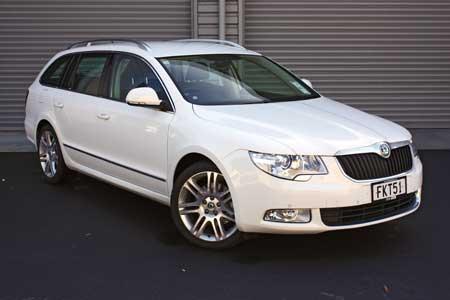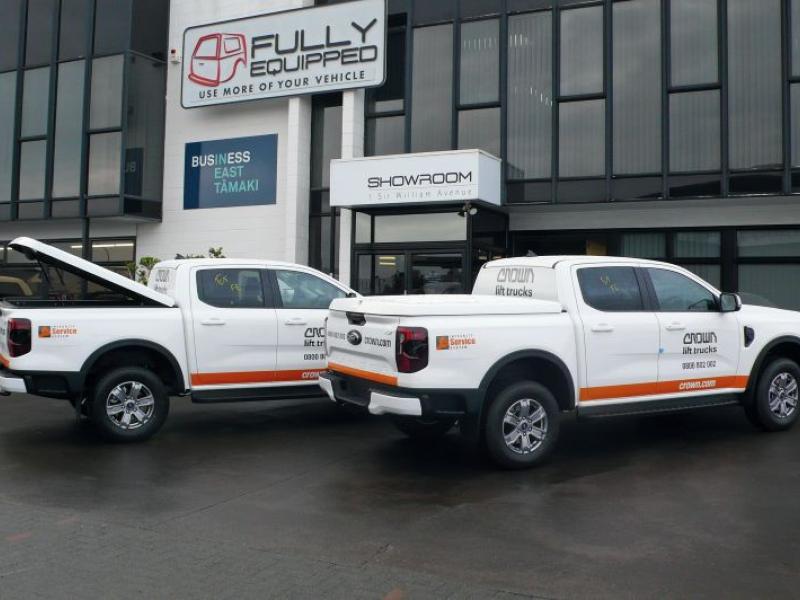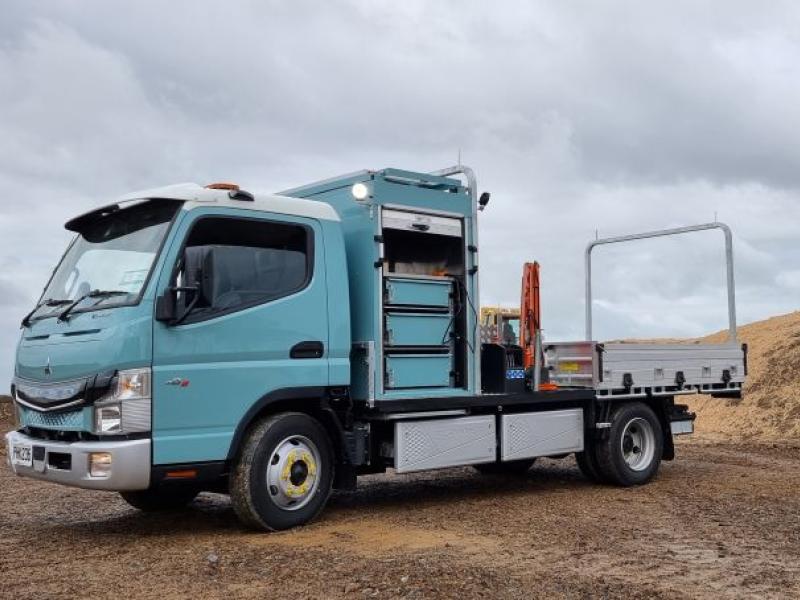| Robert Barry finds Skoda’s new Superb Combi has much to offer in terms of space and amenity as well as environmental and economic performance. Normally the design of a station wagon variant of a notchback saloon looks a bit compromised but in the case of the Superb Combi, we think it actually looks far more elegant than the Superb sedan with its unique twin-door boot operation. According to Skoda the name “Combi” is an abbreviation of “combined-car” which the company has produced various iterations of since the 1920s. Back then Skoda founders Laurin and Klement produced wagon bodies that transformed sedans into commercial vehicles with a loading area at the back. These were regarded solely as the preserve of commercial traders – unlike today’s commercial traveller where the vehicle is also used for family and recreational purposes. Hence the front-wheel-drive Superb Combi with both four-cylinder turbocharged petrol and diesel engines is the first mass produced large European car that we think will truly give the fleet-focussed Commodore Sport Wagon a serious run for its money. There is also an all-wheel-drive 3.6 litre V6 Superb Combi available too, which will give the Premium spec Subaru Outback 3.6R some much needed competition as it too is a favourite with some fleet buyers. Despite the brand’s history the argument for the Superb Combi is compelling, because there is a model that is suitable for most fleet buyers in New Zealand plus it has all the necessary safety features, as well as environmentally friendly engines and competitive running costs. The Combi range starts at $48,000 for the turbocharged petrol engine TSI 118 model (118kW/250Nm) with a 7-speed DSG (direct shift gearbox) transmission. Next is the TDI 103 turbodiesel (103kW/320Nm at $51,000 which has a 6-speed DSG. Both of these models are equipped with Ray Cloth seats and “Comfort” specification. We tested the $62,000 TDI 125 Superb Combi (125kW/350Nm) which has common-rail diesel injection system but is finished in the Elegance trim with leather seats. Like its TDI 103 counterpart, this engine has the six-speed automatic dual-clutch DSG and a particulate filter is fitted as standard. It’s a great combination and one that proved economical – we saw an average fuel consumption figure of 6.6l/100km, not bad considering the claimed figure is 6.1l/100km! We also enjoyed the heated front and rear seats, front and rear dual climate control and the factory fitted integrated Bluetooth telephone – this really should be standard in all vehicles. The $69,000 3.6 FSI V6 (191kW/350Nm) Superb Combi is also imported in the Elegance specification. The 3.6 FSI V6 is only available with an automatic 6-speed DSG and four-wheel drive. The control unit of the fourth-generation Haldex clutch facilitates variable torque split. Under normal traction conditions, 96 percent of power is delivered to the front axle, guaranteeing safe driving on any surface. The specification levels of all Combi models are the same as the sedan versions with the addition of roof rails and cargo nets. The Superb Combi is 4,838 mm long, 1,817 mm wide, and 1,481 mm high. Include the roof rails, which are available in anodized silver or glossy black and the car’s height rises to 1,510 mm. The luggage compartment holds 633 litres, expanding to 1,865 litres when the rear seats are folded down. The width of the tailgate is large enough to accommodate bulky items such as the wooden pallet pictured here. The sill is only 600 mm above the ground which makes for even easier loading. An optional electrically-operated tailgate is delivered with an automatic retractable luggage compartment cover, which is also available separately. When the tailgate is opened, the cover automatically rolls back to the middle position so that there is more room to handle the luggage. Another detail in the luggage compartment is the sliding false floor, which can extend over the rear bumper when the tailgate is open to make moving larger items easier. Aluminium strips, the netting package and hooks in the luggage compartment offer a luggage restraint system that prevents cargo from sliding around when the vehicle is in motion. Lighting for the luggage compartment is integrated into the tailgate which not only illuminates the boot but the whole rear section. Another removable lamp is located on the left side of the luggage compartment. It is battery-powered and when removed from its holder (which doubles as a charger) it can be used as an LED flashlight. A magnet is built into the lamp so it can simply be placed on the car body which is particularly useful when changing wheels or effecting some other emergency repairs. Skoda says some modifications have been made to the Combi’s chassis to accommodate the higher payload and higher gross weight. In the design of the suspension design the emphasis was on creating a balanced relationship between agility and comfort. It works. We found the sport suspension fitted to our TDI 125 Elegance test vehicle coped well with uneven road surfaces; while body roll in bends was largely suppressed. The car’s steering and road holding ability inspired confidence even in very wet and demanding driving conditions. As the story headline says – simply Superb! |
|






